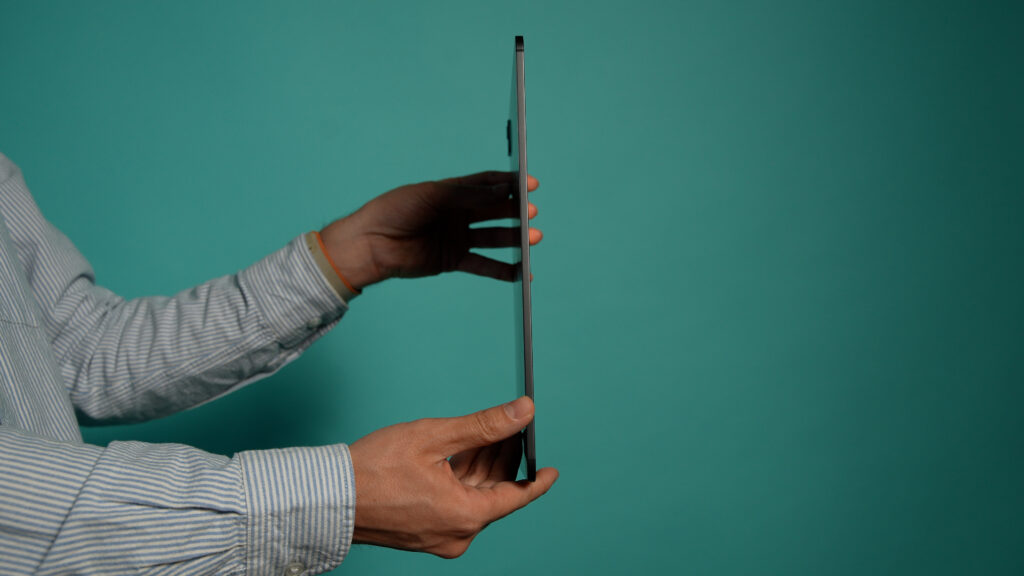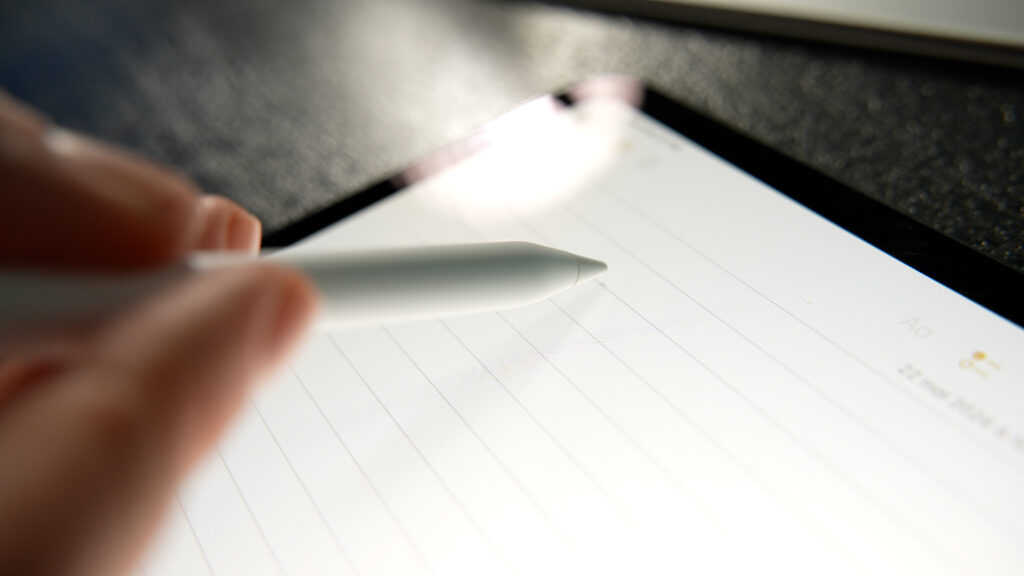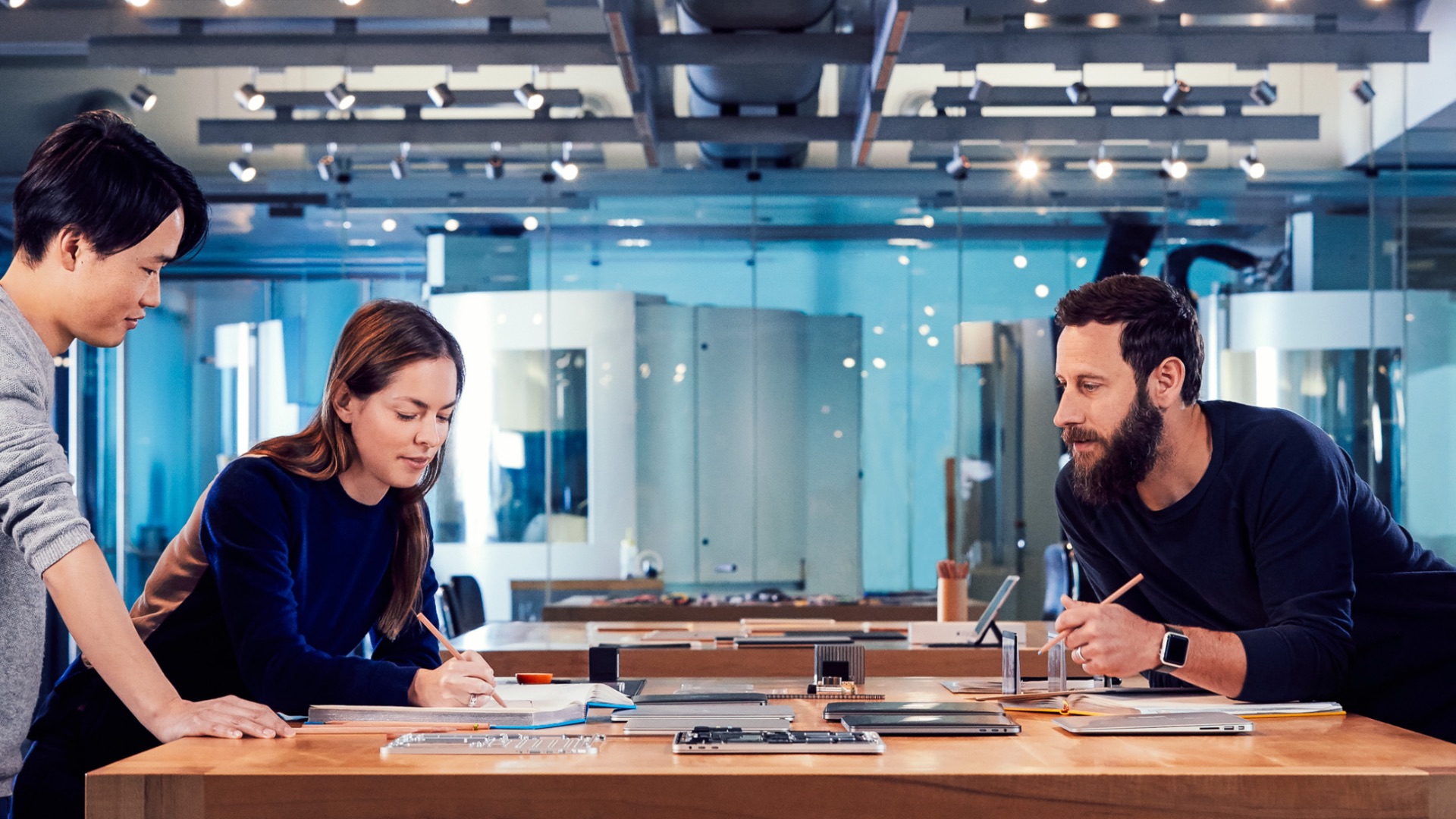The Apple Design Studio is one of the most mysterious places in Apple Park, California. Very rarely shown to the general public (we see it briefly during conferences and in rare interviews), this “collaborative space”, as Apple describes it, is where the brand's flagship products — the iPhone, iPad and Watch — are born. Several genius designers, including the iconic Jony Ive, worked there. It must be said that design is sacred at Apple.

Finesse or autonomy? A question of balance
With a thinness of 5.1 mm, the 13-inch iPad Pro breaks all records. No Apple product has gone this far, while the brand seemed to be pursuing an opposite trend in recent years. iPhones gained weight and battery because Apple believed it was a better compromise for users.
Advertisement
“Portability is at the heart of the iPad experience”says Molly Anderson, who has been designing Apple products for several years. “In 2010, our design intention with the first iPad was to create a magical sheet of glass, a digital sheet of paper. We have never been closer to this original idea”analyzes the designer, who sees slimming as the number 1 priority in this product category. “The new iPad Pro delivers the same battery life people love”adds Scott Brodrick, head of the iPad category, to justify the uselessness of increasing the size of the battery. “It’s a question of good balance”judges the designer.


To achieve such a narrow iPad Pro, Apple says it has worked on many concepts. “Our habit is to meet people in the studio, put models on the table, sketches on the walls”. Molly Anderson introduces the Apple Design Studio as “a very collaborative space” which, unlike Apple's other spaces, truncates the offices for an open studio where everyone is gathered in the same place, where ideas can be exchanged more easily.
In Apple's imagination, the iPad must complement its user. The brand, which says it thinks of its tablet, keyboard and Pencil as “a unique product”places disproportionate importance on certain details, such as a virtual shadow on the screen when using the stylus (a fake brush reflects a brush).


“In the past, we had to rely on your own memory” observes Steve Lemay, in charge of human-machine interaction. “We designed a digital shadow to make you feel like you're holding a real pencil. This convinces you it's a piece of paper. » A “ brain abuse » assumed by the designer, who also says that putting a vibrator in a stylus, the smallest in its history, was “one of the most difficult things”. The Apple Design Studio had to “rethink the entire architecture, despite a very recognizable design on the outside. »
Advertisement
Why is the apple on the back of the iPad Pro upside down?


Available since May 15, 2024, the new iPad Pro represents “a combination of what Apple does best” for its product director. It's hard to prove him wrong, in the sense that the device embodies both Apple's strong points and its obsession with pursuing daring challenges (record finesse, false shadow for a stylus, etc.).
An iPad Pro that was thicker and twice as durable could have seen the light of day, but Apple chose to bet everything on “its magic sheet of glass”. The result is splendid, everyone is free to have their own opinion.
Strong points
- An exceptional OLED screen
- An unprecedented finesse
- The finish is impeccable
- The Magic Keyboard is almost as good as a Mac
- The Apple Pencil Pro is much more than a stylus
Weak points
- The price is too high for a tablet
- Official accessories are expensive
- iPadOS is not convenient for working
- Performance is underutilized
